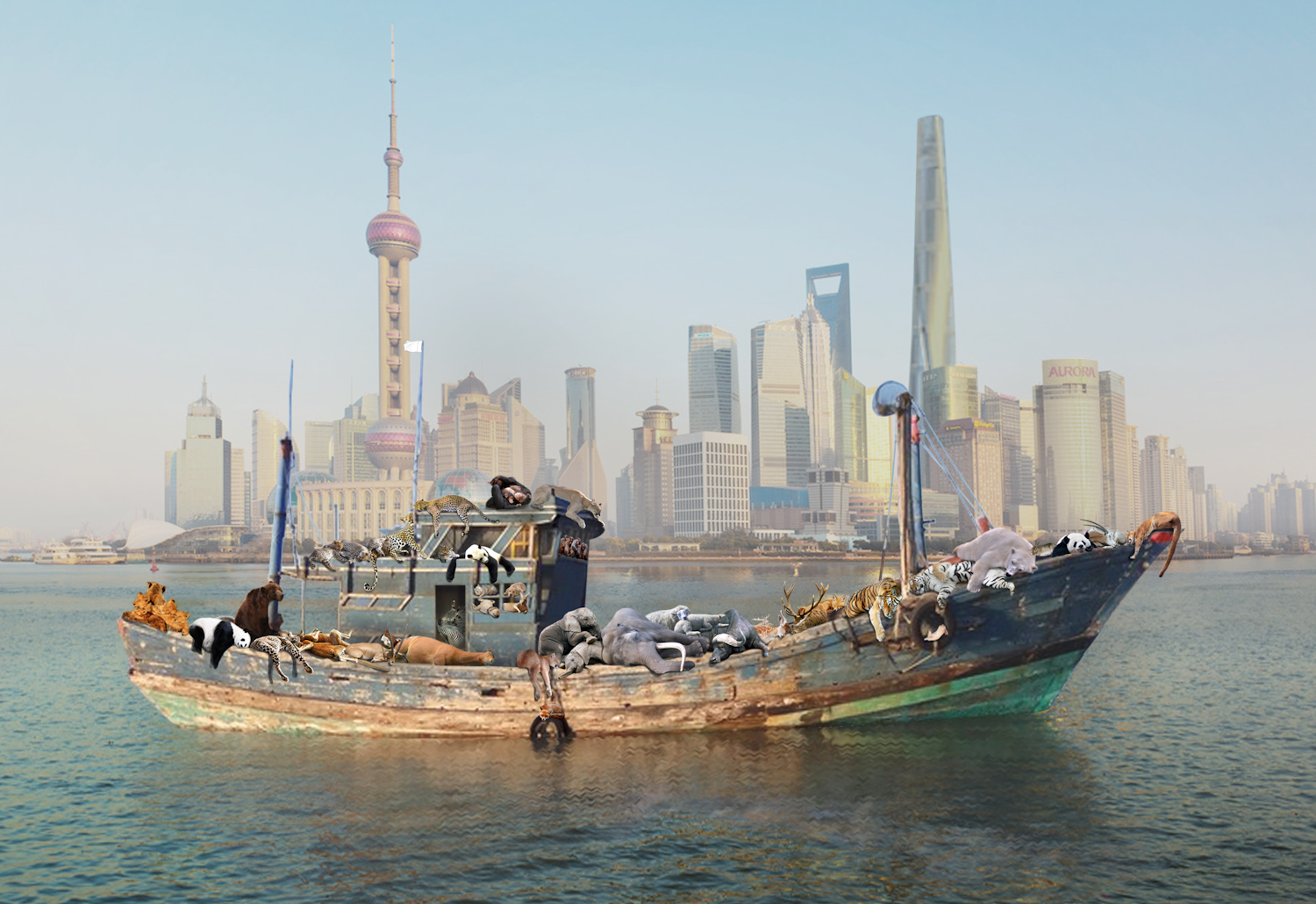
Cai Guo-Qiang, The Ninth Wave.
Photo: Power Station of Art
SHANGHAI — A dozen belly-up fish floated past a crowd of journalists and passersby gathered to see Cai Guo-Qiang’s latest art work on July 17. The fish perfectly foreshadowed the arrival of The Ninth Wave, a fishing boat crewed by pandas, elephants, large cats and other mammals slumped over its railing.
Although they resemble taxidermied animals, the creatures are replicas created using wool and goatskin, similar to those Cai produced in 2013 for his “Falling Back to Earth” exhibition at the Queensland Gallery of Modern Art in Brisbane, Australia. While renderings suggested the boat would sail upstream under its own speed, the work’s elevation onto the bed of a barge was a compromise that allowed a view of the beautiful contours of the boat’s weathered hull.
“The boat is a fishing vessel from my home town of Quanzhou,” Cai told artnet News. “It was in poor condition and was unable to renew its license, so it had been abandoned.”
The environment, which Cai strongly suggests is also in poor condition, is the major concern of his upcoming solo exhibition, which opens at the Power Station of Art in Shanghai, on Friday, August 8.
The Ninth Wave, named after Ivan Aivazovsky’s eponymous painting, was in part inspired by the 16,000 dead pigs that came floating down the Huangpu last year, at least some of which had been infected with the porcine circovirus. That was a kind of readymade art happening, generating attention and commentary that few artworks can compete with.
Yet Cai says “art and this sort of incident are not in a competitive relationship. What they do is echo each other.”
Other works Cai will show at the PSA are likewise ecologically concerned. He will break open the museum floor to create a 250-square meter, 20,000-liter lake of black ink, appearing to seep out of the floor like crude oil, and prepare a new gunpowder painting on paper of The Bund Without Us, which depicts a depopulated Shanghai returning to nature. The museum will be open to the public from 9am on Monday, July 21 to witness the creation of another gunpowder work with ignition taking place at about 4pm.
Another event takes place at 5pm on opening day, when Cai will create daytime fireworks using a rainbow colored powder, a rebuke to Shanghai’s prevailing grey hues. Though Cai has previously orchestrated nighttime fireworks displays, the day time explosions are a recent development.
“The main difference is that fireworks at night illuminate themselves and just a few things around them,” he says. “Day time fireworks are mostly smoke and you see them in and as you see the surrounding environment.”
Some may find such an overtly environmentalist exhibition — with works that address animal extinction and ground, water and air pollution — more polemic than poetic, but Cai is unconcerned.
“The relationships that emerge between art and politics are one of the charms of art,” he says.
Not so charming are the challenges of producing such an eclectic and ambitious show.
“When we go outside the museum we must get many kinds of permissions, many stamps,” says Li Xu, Deputy Director of the Power Station of Art. For [The Ninth Wave] performance and also the fireworks performance we should get permission from many kinds of municipal departments — the fire control department, the public security department, traffic control, everything.”
Cai’s previous Shanghai solo shows include an exhibition at the Shanghai Art Museum in 2002 and “Peasant Da Vincis,” a collection of vehicles invented by Chinese tinkers held at the Rockbund Art Museum in 2010. “But this will be the biggest one,” Li said.